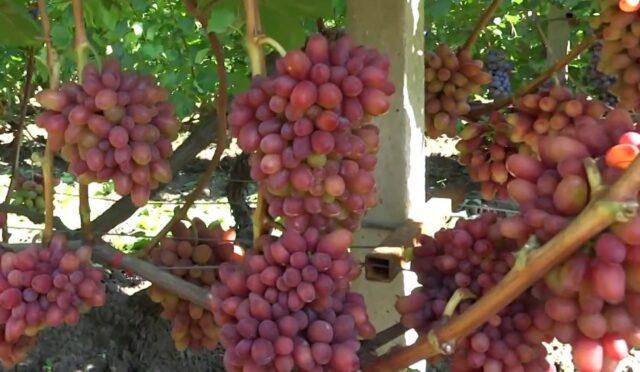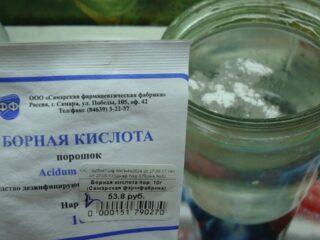Content
Bohemia grapes are a table variety that is quite popular in many countries around the world. In addition to summer residents, the variety is in great demand among professional winegrowers. It can be grown both for personal consumption and for subsequent sale.

The berries of the variety have an exemplary nutmeg taste
History of origin
The Bohemia grape is a hybrid of Ukrainian selection, obtained by crossing such varieties as Ordinary Malva and Millennium. The variety appeared in Zaporozhye, thanks to the work of the famous breeder Vitaly Zagorulko.
Description of the Bohemia grape variety
Bohemia is an early grape variety, the fruits of which begin to be eaten in the summer. The bushes of the crop are vigorous, but quite compact, about two, maximum two and a half meters high.The antennae are located on the shoots. The productivity of the plant is high. In particular, this is influenced by the fact that the snow-white flowers of the variety are bisexual.
Bunches
Bunches of grapes are loose, weigh more than 0.5 kg, on average 600 g, but individual specimens can reach 1 kg. They are cylindrical in shape, wider at the base than at the end. They ripen evenly, without peas. Three pieces are planted on one vegetative shoot. All bunches are characterized by good presentation, look beautiful on the table, and are suitable for sale on the market.
Berries
The berries of the Bohemia variety are large or medium in size, ovoid-papillary in shape. The length of each is 2 cm, weight - about 20 g. There is a slight waxy coating on the surface of the berries. The peel is opaque, dense. The color is attractive, red, with characteristic veins, like gooseberries. Sugar accumulation is above average.

Bohemia grapes are highly resistant to rot
Vine
The vines of the plant are dense and powerful, covered with oval dark green leaves consisting of five lobes. The leaves have small white stripes on the outside, rough on the inside, with a barely noticeable waxy coating. Internodes are medium in size.
Characteristics of Bohemia grapes
The hybrid has a lot of positive qualities. It is distinguished by early ripening, high yields, excellent taste, good frost resistance and average resistance to drought. The variety can be grown for various purposes. It is well transported and can retain its qualities for a long time in a cool, dark place.
Ripening period of Bohemia grapes
The period when the grapes of the presented selection begin to ripen begins in early August.The growing season, judging by the description of the variety, is 110 days from the beginning of flowering. Active fruiting of the crop is observed already in the second year after planting.
Bohemia grape yield
The variety is characterized by high productivity. To achieve maximum performance, it is important to provide the bushes with a light load. With proper care, more than 10 kg of berries are harvested from one adult plant. After ripening, the crop can be stored on the bush without loss of quality for up to two months.
Taste of Bohemia grapes
The grape variety tastes sweet. The aroma of the variety is pleasant, nutmeg, with fruity notes. The flesh is fleshy and dense. The tasting score is 8.6.

If the Bohemia grape bushes are overloaded, the taste of the berries deteriorates
Growing regions
The variety is most suitable for cultivation in the southern regions of Russia. It is allowed to be planted in the Volga region. Most often, the culture can be found on the territory of the Crimean Peninsula, in the regions of the Krasnodar Territory, and in the Caucasus.
Frost resistance
The Bohemia variety is frost-resistant. It can tolerate temperatures down to -22 °C, but young bushes up to three years old need insulation. With the arrival of cold weather, they need to be laid on spruce branches and covered with film or corrugated cardboard on top. In growing regions with colder winters, Boheme grapes are covered at any age.
Drought resistance
Bohemia grape bushes have average resistance to drought. The plant needs to be moistened twice a month.Reducing the number of waterings is allowed only if the plant is mulched with straw.
Resistance to diseases and pests
The variety is quite resistant to most diseases. Among the ailments that can affect the variety, only olive spot, fruit rot and powdery mildew are distinguished.
Among insects, the plant is subject to attacks by mites and flea beetles.
Methods of application
Bohemia is ideal for fresh consumption and contains many useful substances and vitamins. In addition, the berries are often used in winemaking. Many housewives prepare delicious compote from them for the winter.
Advantages and disadvantages
The Boheme variety has a number of positive and negative qualities, but it should be noted that the variety has many more advantages.

Grape seedlings with vaccinations have higher immunity
Advantages:
- early ripening;
- quality harvest;
- good transportability;
- universal application;
- cold resistance;
- compact bush size;
- good commercial quality;
- strong immunity;
- excellent taste.
Flaws:
- demands on watering;
- small bunch sizes;
- susceptibility to powdery mildew;
- difficulty in rooting seedlings.
Landing Features
Bohemia is a grape that grows well and bears fruit regardless of the lighting of the area. It can be planted both in the sun and in the shade.
Preference should be given to places with nutritious soil, on loam or black soil. The pH content should be low.If the soil is too acidic, it should be limed.
When purchasing Boheme seedlings, they are selected according to the following criteria:
- developed root system of the plant at least 20 cm long;
- height of planting material from 100 cm;
- the presence of a graft mark near the root collar of the seedling;
- absence of damage and areas of insect influence on the cuttings.
Before planting grapes in the fall, dig a hole 80 cm wide and 60 cm deep. Cover it with crushed stone, peat or humus. At the time of planting, a mound of fertile soil is poured on top of the drainage, the seedling is placed, spreading its roots over the surface, covered well with soil, compacted, and watered. A support for the bush is dug in next to the hole.
When planting several Boheme seedlings, a distance of about 300 cm is maintained between them, and the inter-row space is made at a distance of 4 cm.
Rules of care
Caring for the Bohemia variety cannot be called difficult. The only thing that the crop is very demanding on is high-quality watering. It must be carried out on time, approximately once every half month, spending 25 liters of settled warm water per bush.
Fertilizing is not necessary, but the harvest depends entirely on its availability and quality. If you neglect to fertilize the crop, it is unlikely that you will be able to collect many good berries. Fertilizing begins two years after planting according to the following scheme:
- in the spring, pour 2 kg of humus under the root of the Bohemia grape;
- in mid-summer, feed with a solution of potassium nitrate (take 30 g of the substance per 5 liters of water);
- a couple of weeks before harvesting, fertilize with ammonium nitrate (120 g per bucket of water);
- in mid-autumn, minerals and organic fertilizers are added.
A mandatory procedure when caring for grapes is pruning the bushes. When flowering ends, all excess shoots are removed from the Boheme variety, leaving up to eight eyes on each. Dry and damaged vines that interfere with the full development of the crop are also pruned.

When growing Bohemia grapes, you need to monitor the quality of watering
Conclusion
The Bohemia grape is a variety that, with proper care, shows excellent results. The fruits are very tasty, high quality, universal in use. Despite the fact that the variety appeared relatively recently, it has already managed to win the love of gardeners and receive many positive reviews.








